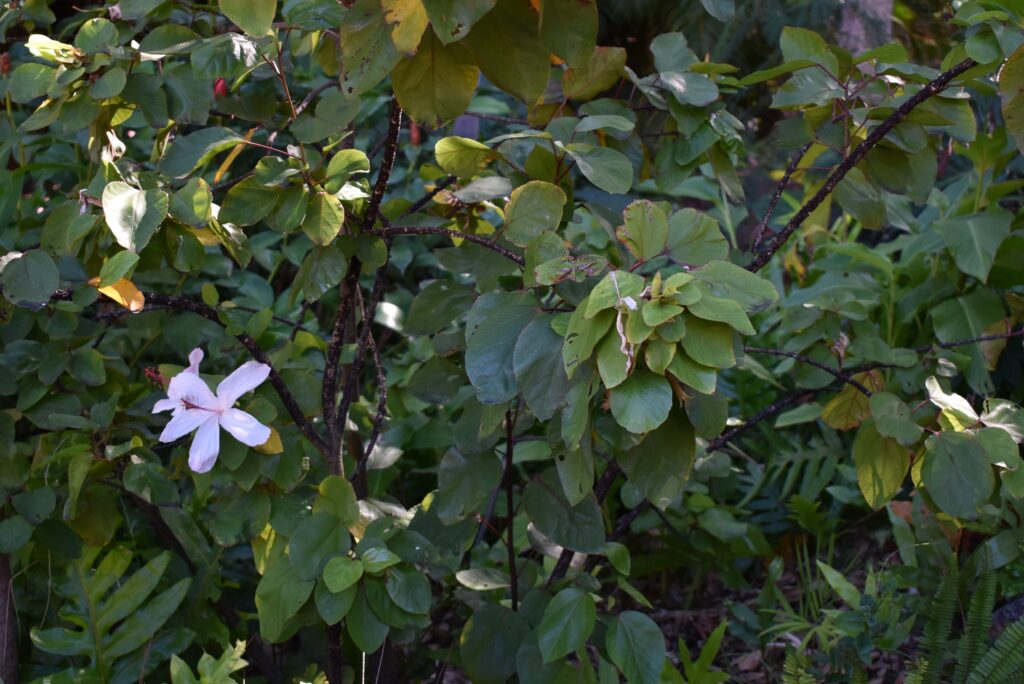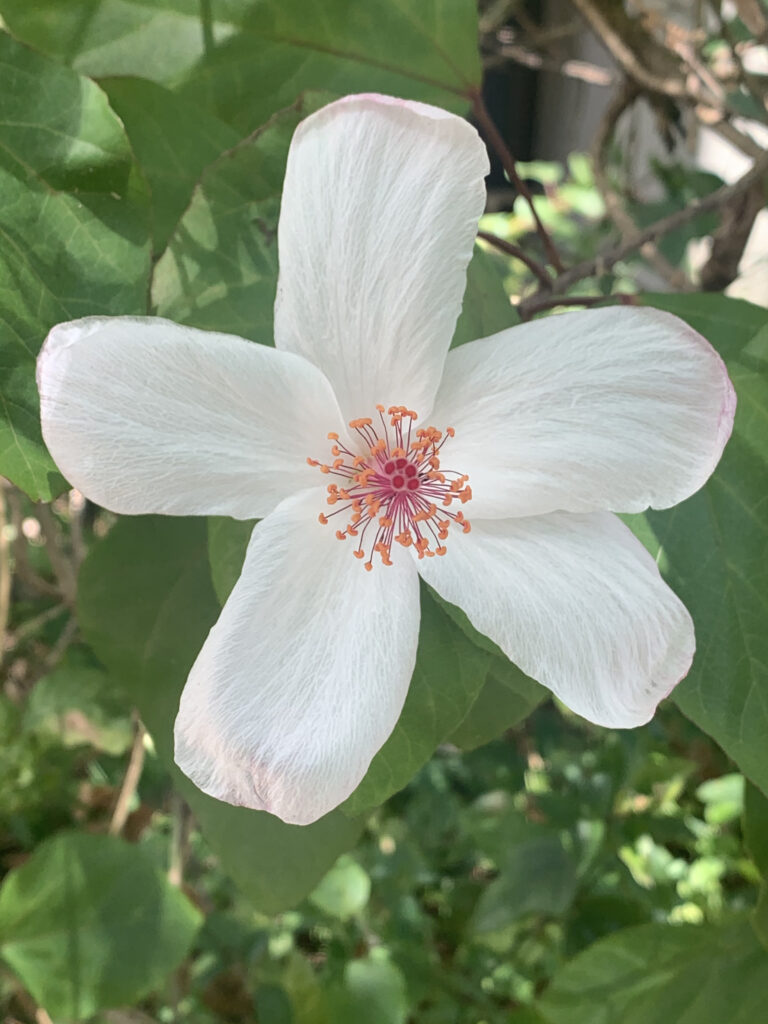Kokiʻo Keokeo
Hōʻike ʻano – (Description): Shrub or small tree generally 15 to 20 feet in height though a few individuals will grow to 30 feet tall. These specimens can be up to 20 feet in diameter. Individual plants vary in appearance from open and airy to compact. The leaves are oval with a smooth upper surface and smooth or slightly toothed edges. The leaves are 4 to 6 inches long and often have red veins and stems.The single white flowers are pinwheel shaped, up to 4 inches across, and borne at the ends of the branches. The staminal column is pink to red (except in subspecies immaculatus which has a white column). The flowers may be slightly pink or may age to pale pink, and are slightly fragrant.
ʻōlelo mua (Introduction):
Inoa(Name):
- Scientific – Hibiscus arnottianus subsp. arnottianus
- Hawaiian – Koki’o Ke’oke’o
ʻOhana: Part of Malvaceae family
Kūlana olakino(Status): Endemic
Kino lau(Many Forms taken by Supernatural body): N/A
Lāʻau lapaʻau(Medicinal Use):
- The illnesses ‘ea and pa‘ao‘ao are treated with the flower buds.
- The leaves are used as a purgative.
- For blood purification the flower buds are used in conjunction with the bark of the tap root, as well as the bark of the ‘ahakea (Bobea spp.), ‘ohi‘a ‘ai bark (Ipomoea pes-caprae), ‘uhaloa bark, (Waltheria indica), kikania (Desmodium sandwicense) plant (except pods), pohuehue roots (Ipomoea pes-caprae), hāpu‘u trunks (Cibotium spp.), ‘auko‘i stalks (Senna occidentalis), noni fruit (Morinda citrifolia), and kō honua‘ula (red sugarcane, Saccharum officinarum) (Chun 1994:157–158).
Cultural Usage:
“Many references” in songs and stories (Neal 1965:561), fiber for cordage (Bornhorst 1994:9)
Propagation: Can be grown by cuttings, seeds and grafting. Take a piece of the tip and cuttings about 6 inches long. Place in root mixture and water often until they develop roots. Three subspecies are recognized. Subspecies arnottianus from O’ahu has smooth leaves 1 1/2 to 4 inches long. Subspecies immaculatus is native to Moloka’i and has a white staminal column and leaves with rounded teeth. Subspecies punaluuensis is also native to O’ahu. It is robust with leaves 4 to 10 inches long. (Criley 1998; Criley 1999; Koob 1998; Rauch 1997; Wagner 1990)
Hoʻohana Hiʻohiʻona ʻāina – (Landscape use): In cool areas, it can grow into a large tree or a small shrub. Grows well in the ground or in a large container.
Mū – (Pests): Rose beetles, thrips, and aphids may attack. Stick bugs can cause bud drop.



